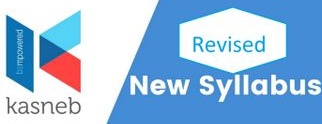Download Financial Management PDF notes
PAPER NO.9 FINANCIAL REPORTING GENERAL OBJECTIVE
This paper is intended to equip the candidate with knowledge, skills and attitudes that will
enable him/her to prepare financial statements for various entities and account for specialised transactions in both the public and private sectors.
LEARNING OUTCOMES
A candidate who passes this paper should be able to:
- Account for various assets and liabilities
- Prepare financial statements including published financial statements for various types of organisations
- Account for specialised transactions
- Prepare group financial statements
- Analyze and interpret financial statements
- Apply International Financial Reporting Standards (IFRSs) and International Public Sector Accounting Standards (IPSASs) in preparing non-complex financial statements.
CONTENT
Assets of financial statements
- Assets and liabilities covered in Paper No. 1: Financial Accounting still examinable (in the context of published financial statements)
- Inventories
- Borrowing costs
- Investment property
- Financial Instruments (presentation, recognition, classes, measurement, de- recognition and disclosures) (excluding impairment, hedging and embedded derivatives)
- Leases (all aspects including dealers and sale and leaseback)
Liabilities of financial statements
- Employee benefits
- Provisions, contingent liabilities and contingent assets
- Income tax (current and deferred tax but not deferred tax in the case of groups)
- events after reporting date
Further aspects of partnerships
- Dissolutions (including piece-meal)
- Amalgamation Conversion and sale of partnership firms
Special transactions
- Revenue recognition
- Contracts with customers
- Hire purchase and installment sales transactions (split of hire purchase profit into interest and gross profit and using actuarial method and sum of digits to account for interest); sale of goods, construction contracts and real estate, provision of services
- Government grants
Financial statements for various types of businesses
- Inventory and biological assets in agriculture
- Insurance
- Banks
- Professional firms (lawyers and accountants)
- Accounting for branches including foreign branches
- Co-operative societies
Published financial statements
- Presentation of financial statements (income statement, statement of comprehensive incomes, statement of changes in equity, statement of financial position and the notes to financial statements)
- Accounting policies, changes in accounting estimates and errors (prior period errors)
- Fair value measurement
Consolidated financial statements
- Accounting for one subsidiary (consolidated income statement, consolidated statement of financial position and a statement of cash flows – group financial statements); consolidated statement of cash flows also covers associate companies and jointly controlled entities but excludes acquisition and disposal of subsidiaries during the year
- Investments in associates and joint ventures
Financial statements under IPSASs
[Provisions of the following IPSASs (emphasis on distinctions with equivalent IASs/IFRSs)]
- Presentation of financial statements
- Accounting policies, changes in accounting estimates and errors
- Borrowing costs
- Consolidated and separate financial statements
- Investments in associates
- Interests in joint ventures
- Events after the reporting date
- Construction contracts, leases and inventories
- Provisions, contingent liabilities and contingent assets
